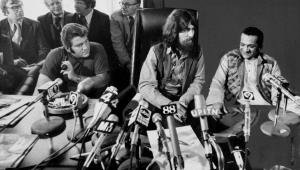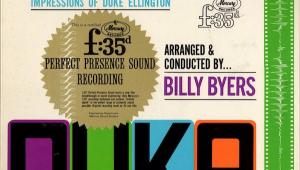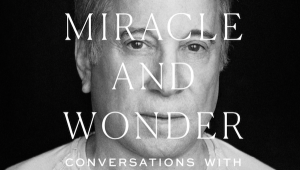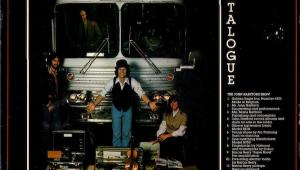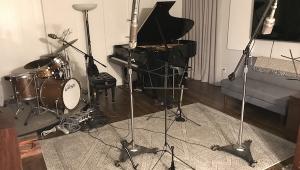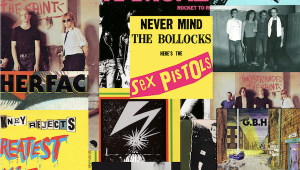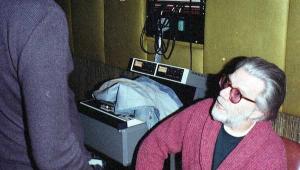Do Blue Note's 75th Anniversary Vinyl Reissues Honor the Label's Rich History?
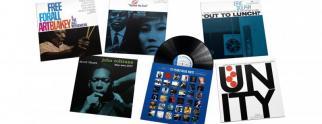
First the great news: United's 120g pressings are very good! They are flat, and other than the usual dimples that seem to afflict many URP records and some "striation" often seen on URP pressings, the sealed records were defect free and better yet, they were uniformly quiet.
I played through all four records with but one noise issue at the end of side two of Blue Train where a trail of dimples led to a few revolutions of "crunchy" sound. That is both excellent quality and very good news. The records look good physically too, with visible scuffing caused by lacquer, not pressing issues. Side two of Wayne Shorter's "Speak No Evil" evidenced some "burnt biscuit" white streaks but they were in the lead out groove area and so didn't play.
While examining that record cut by Ian Sefchick (his scribe mark is a large roman numeral "I" with a smaller "s" inset) I noticed what must be Wayne Shorter's autograph in side one's lead out groove area. Sefchick started out at Capitol in maintenance, working on Ron McMaster's lathe. When this project commenced he resurrected Wally Traugott's original lathe that had been mothballed and set it up in another room.
Another thing I quickly learned was that though Blue Train's cover art is the original mono the reissue is stereo. This came about because of Blue Note's desire to use original artwork. When the label first issued the album in stereo it used the mono artwork and affixed a gold "STEREO" label to the jacket.
So how do these reissues sound? Compared to what? I compared the Liberty era "RVG" pressing of "Speak No Evil" with this one and I found the comment by MicallefK under the Bernie Grundman interview story 100% accurate, though my comparison was to an earlier "Blue Note Records Inc, New York, USA" RVG pressing.
He wrote "The new reissue didn't fare well. It lacks the dynamics and punch of the 70s LP. That old record has a lot of trumpet splat and the instruments are in your face and super dynamic, it's actually a louder mix (sic). The new LP sounded recessed, especially on Hancock's piano. The new LP sounds a little smoother, but I'd rather have the dynamics and the rough-around-the edges quality. Oddly enough, the new LP is far away from what I would call a digital presentation. It just sounds a little weak. But they didn't mess with the basic sound, it just sounds soft."
Clearly the mix isn't different, but the cut and EQ are. Still, without referencing any other pressing, "Speak No Evil" is very listenable, and not at all "digital" sounding as we used to use the curse word.
Larry Young's Unity is one of my favorite Blue Notes so I'm really glad Don Was chose it to be among the first reissues. Any young person who digs Medeski, Martin and Wood will love Unity. I've never heard an original but compared to the Music Matters double 45 this reissue is somewhat drier, less dynamic and less spacious but on its own it is well done because the files were carefully created. The double 45 has greater three-dimensionality, cymbal shimmer and organ "juiciness" but I don't think the people to whom these LPs are being marketed, will care. The sound is clean and bracing. Compared to MP3s, this is HDTV.
This reissue of Blue Train is more accurate to the original than is the Classic reissue. I compared it to an RVG pressing and Rudy panned Coltrane and Kenny Drew to the center. Both Classic's reissue and the double 45 from Analogue Productions keep the pan well to the left. So in terms of spatial accuracy to the original, the new one wins.
Sonically the Classic struck me as being too bright on top and accurately hard in the midrange, the Analogue Productions overall the most pleasing but softer than the original, and the new reissue tonally in between, but harmonically less colorful, spatially flatter and certainly drier.
Were you to do these comparisons on your system no doubt the results and your reaction to them might be different. We have no sonic standard. And while we all want "reissue truth" it's important to remember that the speakers we listen to are very different and more accurate than what Rudy Van Gelder used to monitor his cuts. For my money the new Music Matters Blue Train mono reissue is the bomb. Coltrane's sax has bite. It gets hard when he presses but you know what? So does this new one from Blue Note.
If you're a Blue Note "newbie" eighty bucks gets you all of these records and they are all worth having. The only one I didn't have was Free For All issued in 1964. The level of outrage and simmering anarchy in the music of Art Blakey and The Jazz Messengers here was about four years ahead of its time and given today's mostly studious and brain-heavy jazz, it will definitely rock your world!
To conclude: If any of these really float your boat you could always try one of the audiophile quality pressings to hear what differences there are. If you get this Unity and then the Music Matters double 45 you'll get it. The differences aren't subtle. However here the pressing quality is fine, the artwork decent, the transfers good and the price right. The Blue Note 75th anniversary 100 LP vinyl reissue series definitely honors the legacy.






